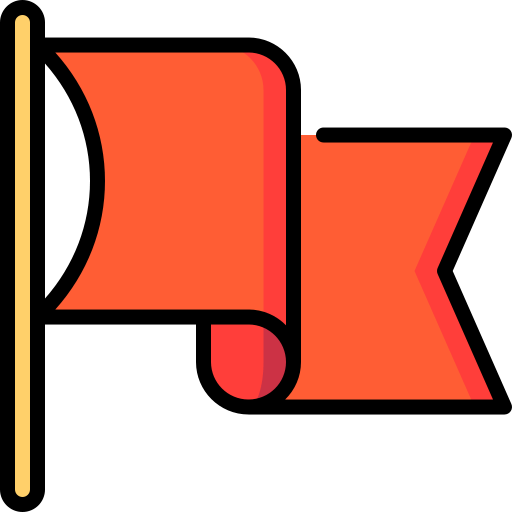Flag of Estonia
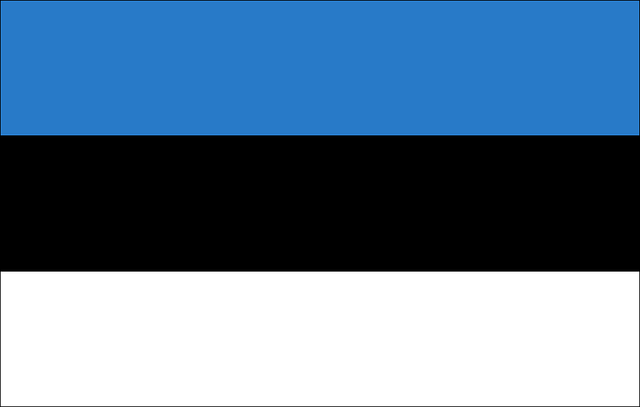
Estonian flag
- Official approval of the flag: 1990
- Flag emoji: 🇪🇪
- Period: Modern flags
- Type of flag: Flags of countries • Flags of continental countries
- Belonging to the continent: Europe
- Colors on the flag: white • blue • black
- Emblem on the flag: Without emblem
Estonia is located in Northern Europe, bordering Latvia to the south, Russia to the east, and the Baltic Sea to the west and north. Its capital is Tallinn. The area is 45,227 km² and the population is about 1.3 million people. The official language is Estonian, and Russian is also widely spoken. Estonia gained independence from the Soviet Union in 1991. The country is technologically advanced and known as one of the leading cybersecurity centers in Europe. The main national composition is Estonians, with minorities of Russians, Ukrainians and Belarusians.
The Estonian flag, known as the blue, black and white tricolor, is the official national symbol of the Republic of Estonia. Its horizontal design of three equal stripes reflects the historical struggle of the Estonian people for freedom, national dignity and the natural beauty of the country.
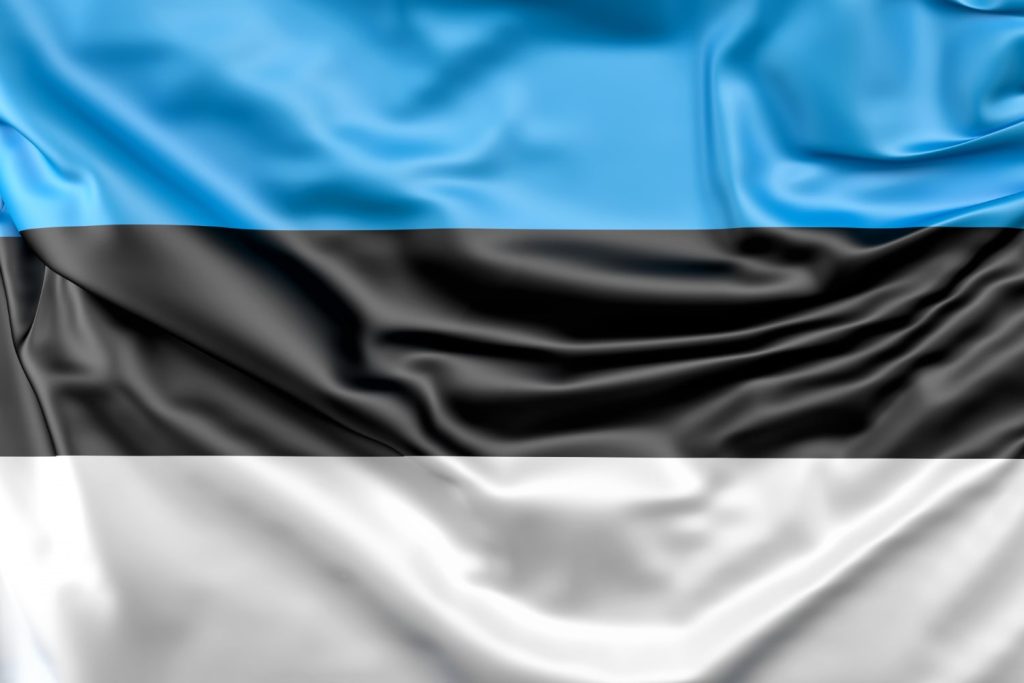
History of the Estonian flag
The flag of Estonia has a special significance in the national history and is a symbol of the revival of statehood.
The origin of the flag
- 1881: The flag was created as a symbol of the student society “Vironia” (Eesti Üliõpilaste Selts) in Tartu. Its colors were chosen as a representation of the Estonian national spirit.
- 1918: After gaining independence on February 24, 1918, the tricolor was adopted as the official flag of Estonia.
Prohibition and reinstatement
- 1940-1990: During the Soviet occupation, the flag was banned and its use was persecuted. The flag of the Estonian SSR was officially used instead.
- August 7, 1990: A year before the restoration of independence, the tricolor was officially returned as the national flag of Estonia.
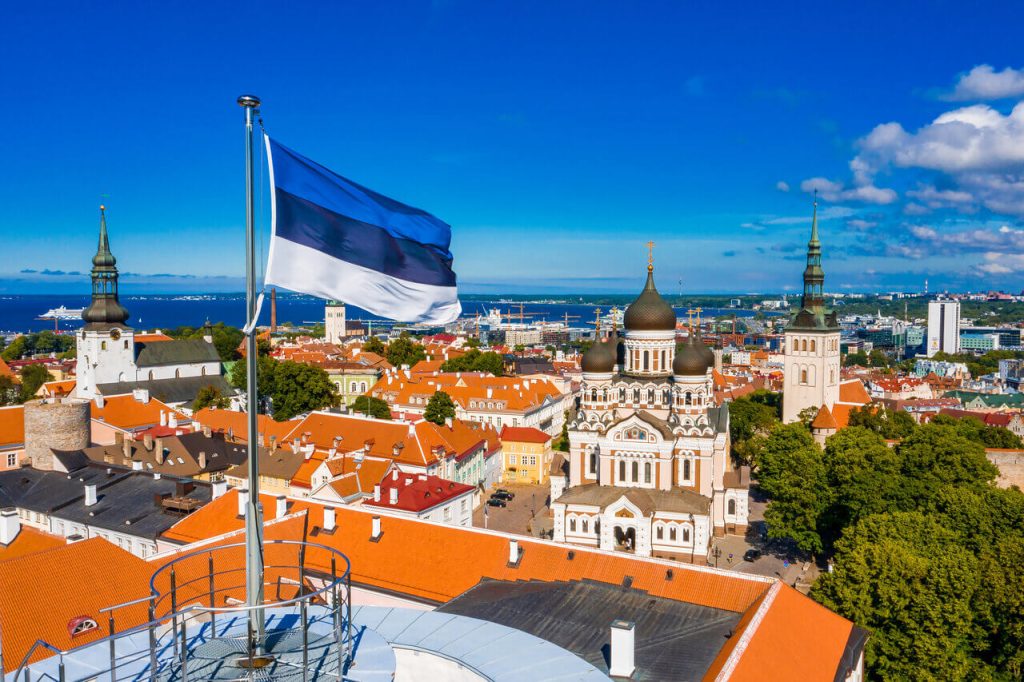
Colors of the flag of Estonia
Meaning of the flag colors
Each of the three colors of the Estonian flag has a symbolic, historical and natural meaning:
- Blue:
- Symbolizes the sky, the sea, the national faith and the desire for freedom.
- It also represents loyalty and hope for the future.
- Black:
- Represents fertile land, the hardships of the past, and the strength of the people.
- Often interpreted as the color of national identity.
- White:
- Symbolizes snow, light, purity and the desire for spiritual growth.
- It also represents the struggle for truth and peace.
Color codes
The following color codes have been approved for the accurate graphic representation of the Estonian flag:
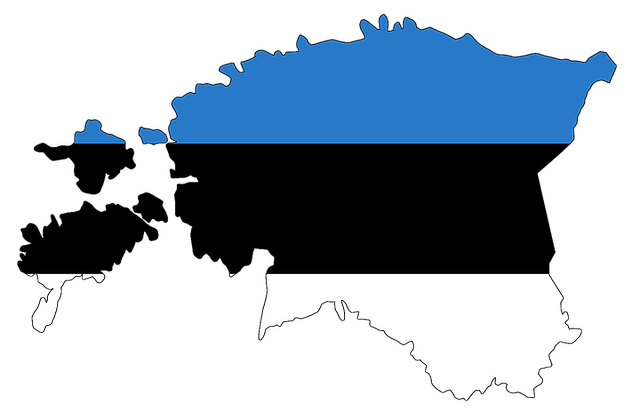
- Blue:
- RGB: (0, 114, 206)
- HEX: #0072CE
- CMYK: (100, 45, 0, 0)
- Pantone: 285 C
- Black:
- RGB: (0, 0, 0)
- HEX: #000000
- CMYK: (0, 0, 0, 100)
- Pantone: Black
- White:
- RGB: (255, 255, 255)
- HEX: #FFFFFF
- CMYK: (0, 0, 0, 0)
- Pantone: White
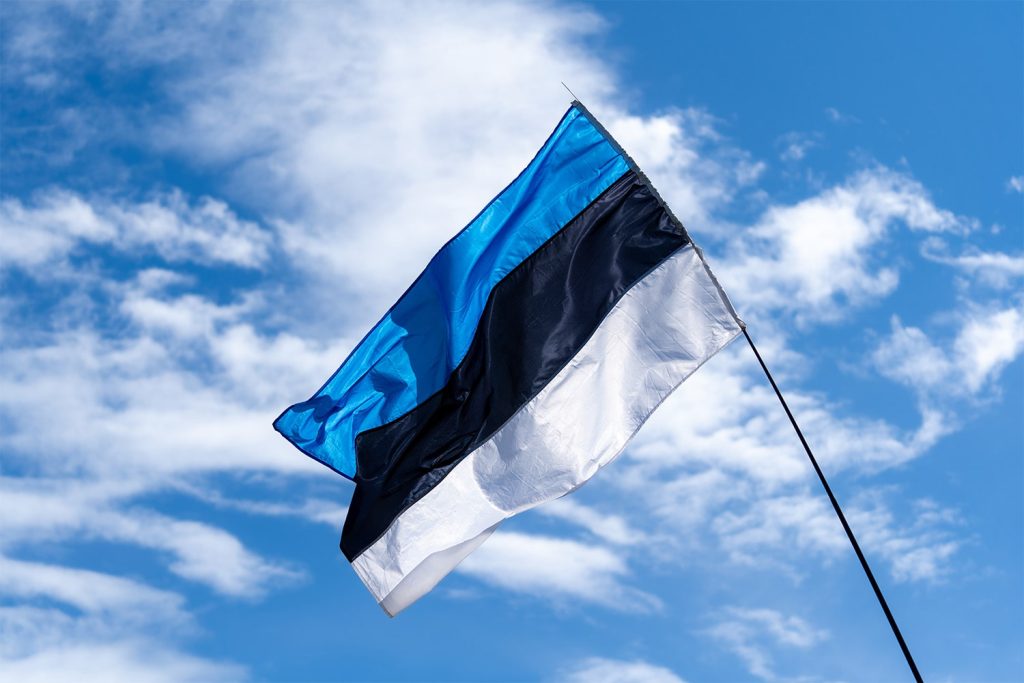
Format and proportions
The flag of Estonia has a classic horizontal tricolor design.
Flag proportions
The official aspect ratio of the flag is 7:11, which means that the width of the flag is almost one and a half times greater than its height.
The arrangement of the stripes
- The upper stripe is blue.
- The middle stripe is black.
- The bottom stripe is white.
When the flag is hung vertically, the order of colors changes from left to right: blue, black, white.
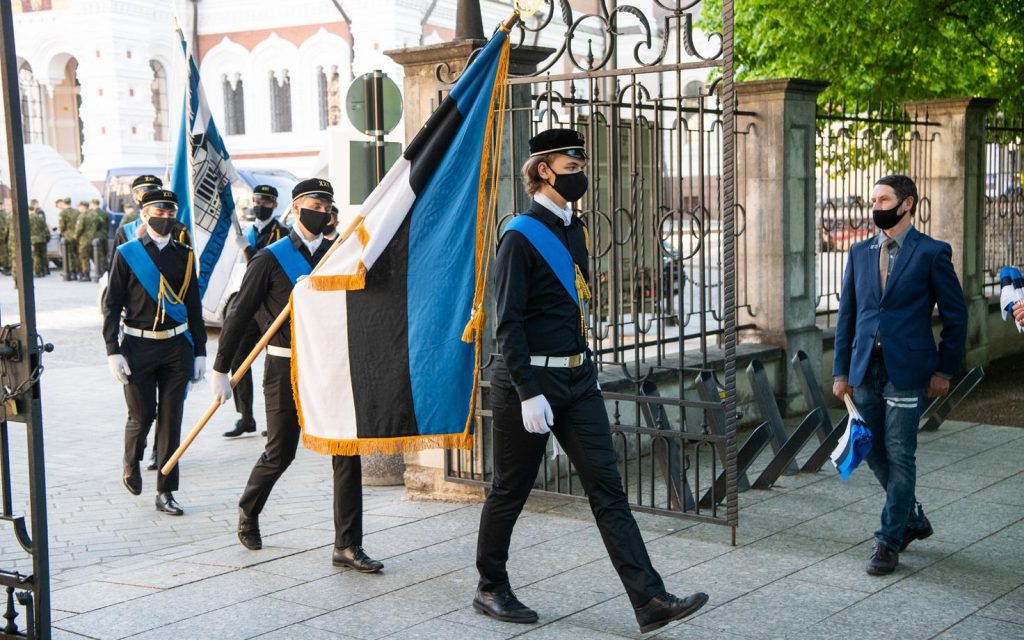
Estonian flag fly ceremony
The official ceremony of raising the Estonian flag is an important part of national holidays and celebrations. It symbolizes respect for statehood, freedom and national unity.
When the ceremony takes place
The most famous ceremony takes place every year on June 4, the Day of the Estonian Flag. It was on this day in 1884 that the blue, black, and white flag was first consecrated in the city of Otepaa.
Flag-raising ceremonies are also held on other national holidays:
- February 24 – Independence Day of Estonia
- August 20 – Independence Day
Venue
The central location for the ceremony is the Hermann Peak Tower in Toompea Castle, Tallinn. This tower is a historical and symbolic place where the national flag of independent Estonia was first raised in 1918.
How the ceremony goes
- The beginning: The ceremony traditionally begins at dawn.
- Participation of officials: The President of Estonia, representatives of the government, the Armed Forces, youth organizations, and the public take part in the ceremony.
- Anthem and speeches: After the flag is raised, the Estonian national anthem is played and speeches are delivered.
- Honor Guard: The flag is accompanied by a guard of honor and a military salute on designated days.
This ritual is deeply rooted in the national consciousness of Estonians and is a symbol not only of statehood but also of the spiritual unity of the nation.

Interesting facts about the Estonian flag
- The earliest surviving flag: The original tricolor from the 1880s is kept in the Estonian National Museum as a relic.
- The student flag became the national flag: Originally created as a student symbol, the tricolor has become the flag of the entire nation.
- Official Flag Day: In Estonia, the Flag Day is celebrated on June 4, when the flag was consecrated in the city of Otepaa in 1884.
The Estonian flag is a powerful symbol of freedom, historical memory and national dignity. Its colors unite the country’s past, present and future, reflecting both the natural beauty and the strength of the Estonian people’s spirit.
